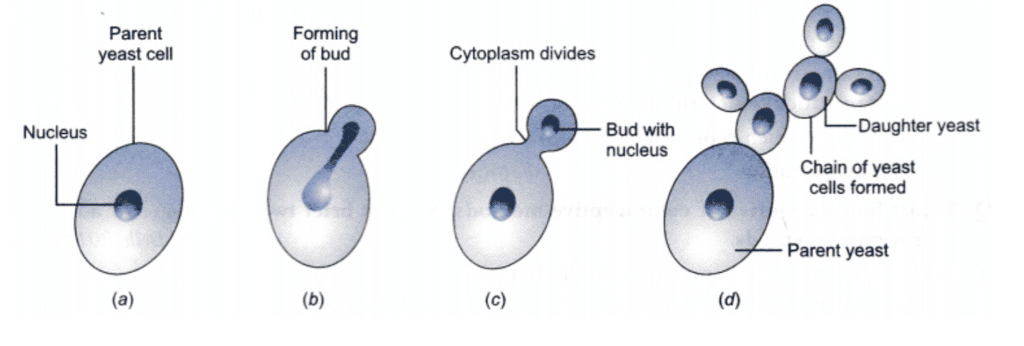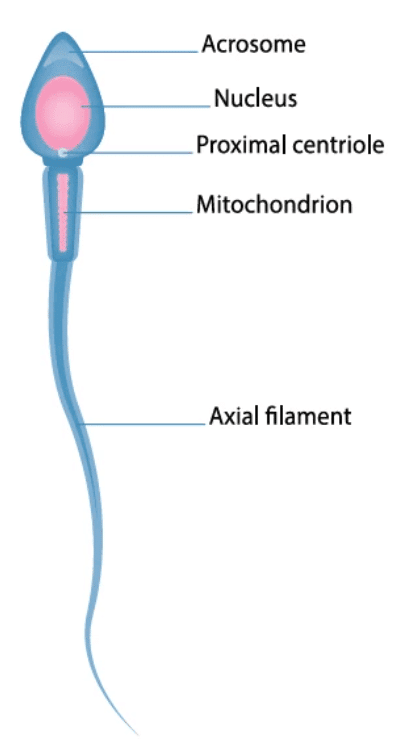Reproduction in Animals Class 8 Worksheet Science Chapter 6
| Table of contents |

|
| Multiple-Choice Questions (MCQs) |

|
| Fill-in-the-Blanks |

|
| True/False Statements |

|
| Very Short Answer Questions |

|
Multiple-Choice Questions (MCQs)
Q1: Which of the following structures produces sperm in the male reproductive system?
A. Testes
B. Uterus
C. Ovaries
D. Fallopian tubes
Ans: A. Testes
Q2: In which type of fertilisation does the fusion of gametes occur outside the female’s body?
A. Internal Fertilisation
B. External Fertilisation
C. Budding
D. Binary Fission
Ans: B. External Fertilisation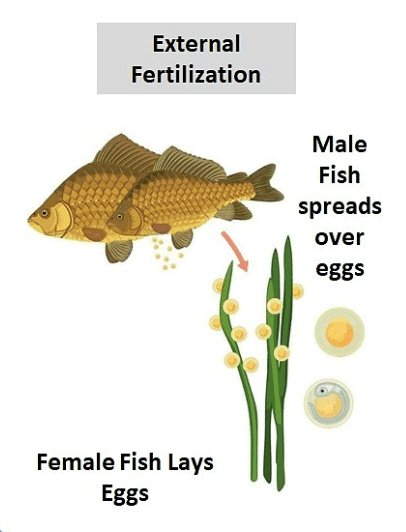
Q3: Which of the following animals is oviparous (lays eggs)?
A. Dog
B. Cat
C. Hen
D. Cow
Ans: C. Hen
Q4: The process by which a tadpole develops into an adult frog, involving major body changes, is called:
A. Fertilisation
B. Metamorphosis
C. Cloning
D. Budding
Ans: B. Metamorphosis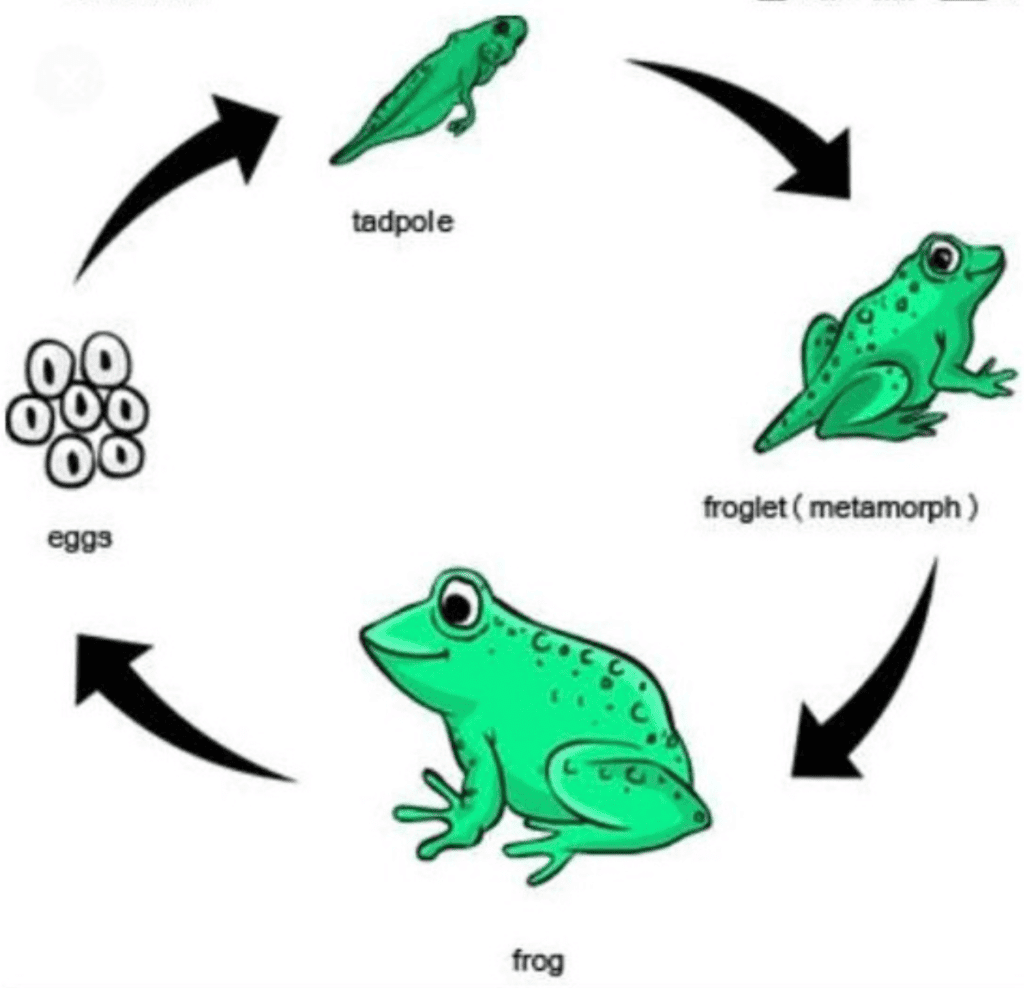
Q5: Dolly, the first cloned mammal, was genetically identical to:
A. The Scottish blackface ewe that carried her
B. The Finn Dorsett sheep from which the nucleus was taken
C. A random sheep in the flock
D. No other sheep—she was genetically unique
Ans: B. The Finn Dorsett sheep from which the nucleus was taken
Fill-in-the-Blanks
Q1: The fusion of sperm and egg is known as Fertilisation.
Q2: Animals like frogs undergo external fertilisation, where eggs are laid in water and sperm are released over them.
Q3: In humans, the embryo gets embedded in the wall of the uterus for further development.
Q4: The stage of the embryo where all body parts can be identified is called the foetus.
Q5: The process by which an organism like Amoeba splits into two new Amoebae is called binary fission.
True/False Statements
Q1: Asexual reproduction involves only one parent and does not require gametes.
Ans: True
Q2: Budding in Hydra requires two parents to produce a new individual.
Ans: False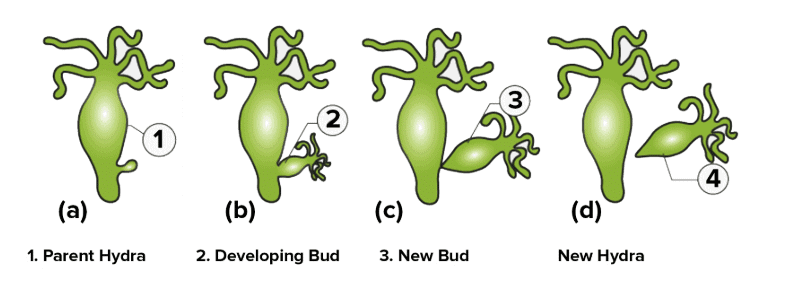
Q3: Animals that give birth to young ones directly are called viviparous animals.
Ans: True
Q4: In human beings, the fertilised egg (zygote) develops outside the mother’s body.
Ans: False
Q5: A frog’s egg is protected by a layer of jelly instead of a hard shell.
Ans: True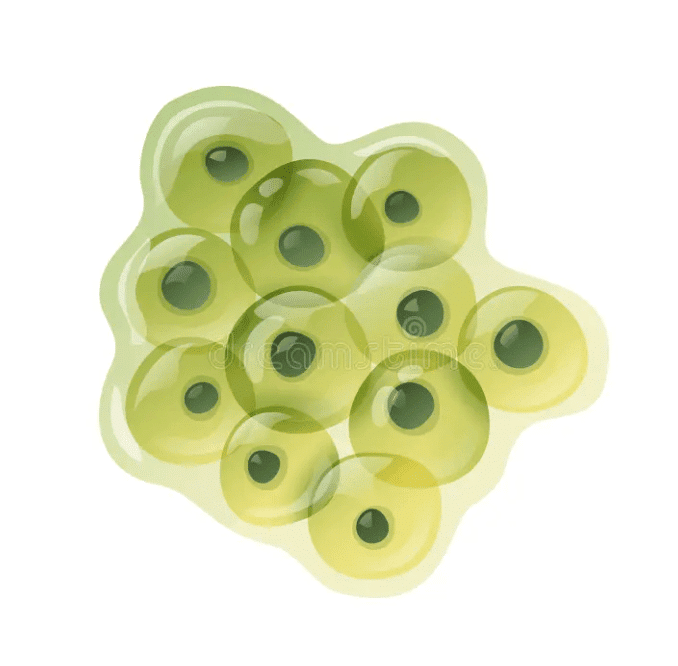 Frog's egg
Frog's egg
Very Short Answer Questions
Q.1. Name two animals which reproduce asexually.
Ans: Hydra, Amoeba
Q.2. Who cloned Dolly the sheep?
Ans: Dolly was cloned by Ian Wilmut and his colleagues at the Roslin Institute in Edinburgh, Scotland.
Q.3. Why do fish and frogs lay eggs in hundreds?
Ans: Though these animals lay hundreds of eggs and release millions of sperms, all the eggs do not get fertilized and develop into new individuals. This is because the eggs and sperms get exposed to water movement, wind and rainfall. Also, there are other animals in the pond which may feed on eggs. Thus, production of large number of eggs and sperms is necessary to ensure fertilization of at least a few of them.
Q.4. What is ‘in vitro fertilization’ technique of reproduction?
Ans: In some women oviducts are blocked. These women are unable to bear babies because sperms cannot reach the egg for fertilization. In such cases, doctors collect freshly released egg and sperms and keep them together for a few hours for IVF or in vitro fertilization (fertilization outside the body). In case fertilization occurs, the zygote is allowed to develop for about a week and then it is placed in the mother’s uterus. Complete development takes place in the uterus and the baby is born like any other baby. Babies born through this technique are called test-tube babies.
Q.5. Which type of reproduction does not involve gametes?
Ans: Asexual reproduction
Q.6. What are the reproductive organs in humans which produce the gametes?
Ans: The ovary produces female gametes called ova and the testes produce male gametes called sperms.
Q.7. Define asexual reproduction. Describe two methods of asexual reproduction in animals.
Ans: The type of reproduction in which only a single parent is involved is called asexual reproduction. The two methods of asexual reproduction in animals are:
Budding: In this type of asexual reproduction, a small part of the body of parent organism grows as a ‘bud’ which then detaches and becomes a new organism. Example- Yeast
Binary fission: In this type of asexual reproduction, the parent organism splits (or divides) to form two new organisms. Example - Amoeba reproduces by binary fission by dividing itself into two parts.
Q.8. How does fertilization take place in frog?
Ans: During spring or rainy season, frogs and toads move to ponds and slow flowing streams. When the male and female come together in water, the female lays hundreds of eggs. Frog’s egg is not covered by a shell and it is comparatively very delicate. A layer of jelly holds the eggs together and provides protection to the eggs. As the eggs are laid, the male deposits sperms over them. Each sperm swims randomly in water with the help of its long tail. The sperms come in contact with the eggs. This results in fertilization.
Q.9. Name the reproductive process which involves two parents.
Ans: Sexual reproduction
Q.10. What are the male gametes in humans called?
Ans: The male gametes in humans are called sperms.
Q.11. What is an embryo?
Ans: The zygote divides repeatedly to give rise to a ball of cells. The cells then begin to form groups that develop into different tissues and organs of the body. This developing structure is termed as an embryo.
Q.12. Describe the process of fertilization in human beings.
Ans: The first step in the process of reproduction is the fusion of a sperm and an ovum. When sperms come in contact with an egg, one of the sperms may fuse with the egg. Such fusion of the egg and the sperm is called fertilization. During fertilization, the nuclei of the sperm and the egg fuse to form a single nucleus. This results in the formation of a fertilized egg or zygote.
Q.13. Why do fish and frogs lay eggs in hundreds?
Ans: Though these animals lay hundreds of eggs and release millions of sperms, all the eggs do not get fertilized and develop into new individuals. This is because the eggs and sperms get exposed to water movement, wind and rainfall. Also, there are other animals in the pond which may feed on eggs. Thus, production of large number of eggs and sperms is necessary to ensure fertilization of at least a few of them.
Q.14. What is the name given to the fusion of male and female gametes?
Ans: Fertilization is the name given to the fusion of male and female gametes.
Q.15. What type of asexual reproduction take place in amoeba?
Ans: Amoeba reproduces by the common asexual reproduction method called binary fission.
|
90 videos|415 docs|44 tests
|
FAQs on Reproduction in Animals Class 8 Worksheet Science Chapter 6
| 1. What is reproduction in animals? |  |
| 2. How do animals reproduce? |  |
| 3. What are the different types of sexual reproduction in animals? |  |
| 4. What are the advantages of sexual reproduction in animals? |  |
| 5. What are the disadvantages of asexual reproduction in animals? |  |

